
Comparison of Mid-Layer Materials
Mid-layer is an important part of a layered clothing system because it provides insulation and thus keeps your warm in cold conditions. The term “mid-layer” is often confusing to those who are new to hiking because it can apply to various garments. Fleece jackets, woollen sweaters, down jackets and jackets with synthetic insulation are all considered mid-layers. A mid-layer is basically any garment that provides insulation and is worn between a base layer (for example a Merino wool t-shirt) and a shell/outer layer (for example a rain jacket). However, in dry and wind-free conditions the shell is usually not worn and therefore the mid-layer garment is basically worn as the outer layer. In very cold conditions you might wear more than one mid-layer garment in order to increase insulation and performance. An example could be a hiker wearing a Merino wool t-shirt (base layer), lightweight fleece jacket (mid-layer), jacket with synthetic insulation (mid-layer) and a rain jacket(shell/outer layer). Mid-layers are often called insulation layers because they primarily provide insulation.
If you have any questions or want to share your thoughts on mid-layer materials, drop us a line in the comments below.
If you want to learn more about clothing materials, do check out our articles Comparison of Base Layer Materials and Comparison of Shell Materials.
What does the mid-layer do?
Provides insulation
The main purpose of a mid-layer is to reduce the convective heat loss by trapping the body heat within the fabric instead of letting it escape into the cooler outside air. The insulation level of a mid-layer depends on the material’s density (weight per m2) and thermal efficiency (warmth-to-weight ratio). The higher the density and thermal efficiency of the material, the warmer the garment is. The thermal efficiency is highly connected to the amount of air that the material can entrap. Air is one of the best insulators and therefore materials that contain/create tiny air pockets such as for example goose down are known for having great insulating properties. Please note that a mid-layer should be chosen according to the expected conditions – warmer is not always better. A down jacket will for example be too warm when hiking at temperatures of 10 C and higher, while a fleece jacket alone will not provide sufficient insulation at temperatures of -10 C.
Manages moisture
Moisture that originates from the body (perspiration) or from the outside (precipitation), has to be wicked to the outside of the garment where it can evaporate or pass to the next layer in order not to cause rapid conductive heat loss. This happens when your clothes are wet because the thermal conductivity of water is 25 times higher than the thermal conductivity of air. Mid-layer should provide good moisture-wicking properties in order to reduce the conductive heat loss. Fleece jackets provide the best moisture management and are thus also suitable for wearing over t-shirts. Thicker mid-layers such as down jackets are best for wearing over long-sleeved base layers so that the base layer does the heavy lifting in terms of moisture management. The rule of a thumb is that the closer the mid-layer is to the skin, the better moisture-wicking properties it has to offer for providing and maintaining good warmth.
Mid-Layer – What characteristics to look for?
Good warmth-to-weight ratio
The warmth-to-weight ratio tells us how much warmth the garment provides for its weight. Using a mid-layer with a good warmth-to-weight ratio reduces the overall weight that you are wearing/ carrying and therefore allows you to hike faster and easier. The warmth-to-weight ratio greatly depends on the material’s ability to trap the body-warmed air – the more warm air the material can entrap for its weight, the better the warmth-to-weight ratio is.
Compressibility
Mid-layers made of highly compressible materials allow you to save a significant amount of space in a backpack which comes in handy when doing multi-day hiking trips.
Quick-drying:
Mid-layers should be quick-drying as they will otherwise get soaked with sweat during high intensity activities (hiking uphill, climbing etc). This will increase the thermal conductivity and eventually lead to rapid cooling during low intensity activities (hiking downhill) or rest phases. However, there is one exception to this rule – Merino wool apparel retains insulating properties even when wet and in general dries longer than synthetic fabrics. For more information about Merino wool please read Why you should wear Merino wool clothing. The drying time of a garment greatly depends on the thickness of the fabric and water absorbency of the fibers it is made of. For example polyester fleece absorbs only up to 0.4 % of its own weight in moisture and therefore it dries very fast.
Thicker mid-layers (for example down jackets or jackets with synthetic insulation) dry longer but are also more protected against rain as they usually have a water resistant outer shell. The main reason that they take longer to dry is not the water absorbency of the fibers, but that they use more material (insulation, outer shell, inner liner) which all absorb water that then has to dissipate. The water absorbency of the most used materials is indeed quite low; synthetic insulation is usually made of polyester and thus absorbs very little water like polyester fleece. Down treated with hydrophobic agent also doesn’t absorb a significant amount of water.
Most Common Materials in Mid-Layers and Comparison
Most common materials in mid-layers for hiking, mountaineering and other outdoor activities are:
- Polyester Fleece (also see The Best Fleece Jackets)
- Merino Wool
- Goose Down (also see The Best Jackets with Down Insulation)
- Synthetic Fill (also see The Best Jackets with Synthetic Insulation)
Below are the basic characteristics of the most common materials used in mid-layer clothing. Please note that some of these characteristics (drying time, moisture-wicking performance) also greatly depend on the thickness of the fabric/insulation.
| Characteristic/Fabric | Polyester Fleece | Merino Wool | Goose Down | Synthetic Fill |
|---|---|---|---|---|
| Weight-to-warmth ratio | Decent | Poor | Excellent | Good |
| Compressibility | Decent | Poor | Excellent | Good |
| Water Absorption Performance | Excellent (Absorbs up to 0.4% of its own weight in water) | Decent (Absorbs up to 33% of its own weight in water) | Good if treated with hydrophobic agent (Absorbs more than Polyester but less than Merino wool) | Excellent (Absorbs up to 0.4% of its own weight in water) |
| Warmth when wet | Good | Good | Poor (if not treated with hydrophobic agent) | Good |
| Durability | Good | Decent | Excellent | Decent |
| Moisture-Wicking Performance | Excellent | Good | Depends on the garment | Depends on the garment |
| Drying Time | Excellent | Decent | Decent if treated with hydrophobic agent | Good |
| Price | Inexpensive | Expensive | Very Expensive | Inexpensive |
More about Mid-Layer Materials
Polyester Fleece
Source: Synthetic – Oil
Typically used for:
- Mid-Layers
- Gloves
- Hats
Polyester fleece is a soft and fuzzy fabric that was developed in the 80’ and has since then been widely used for mid-layer clothing. Fleece is made by napping a polyester fabric which results in increased thickness and establishing air pockets for insulation. It usually comes in different densities (from 100g/m2 to 300g/m2) and textures which offer different levels of insulation. Fleece offers a superior warmth-to-weight ratio in comparison to Merino wool but inferior to goose down or synthetic fill materials. A jacket made of fleece with a density of 300g/m2 will in average be three times less warm than a jacket that uses high-end synthetic insulation and five times less warm than a jacket that uses high-end goose down for insulation. The main advantages of fleece mid-layers are that they absorb very little moisture (up to 0.4% in their own weight), dry very fast and efficiently wick moisture to the outside where it can evaporate or pass to the next layer. Therefore, they are perfect for wearing directly over a base layer. A popular manufacturer of fleece fabric is Polartec which offers several different types of this fabric; Polartec Classic, Polartec High Loft and Polartec Thermal Pro. These types differ by performance; the Polartec High Loft has a structure that imitates animal fur with longer, thicker “hairs” in order to create and maintain loft for trapping warm air while the Polartec Thermal Pro offers a durable wind and water repellent exterior in addition to superb insulation.
Our Advice on Fleece
We recommend polyester fleece mid-layer clothing for hiking trips in all conditions because it dries fast, wicks moisture away and offers decent insulation. In very cold conditions we recommend wearing a light (100g/m2) fleece garment over a base layer but under a heavier down/synthetic jacket in order to reduce the conductive heat loss.
Merino Wool
Source: Natural – Sheep
Typically used for:
- Base Layers
- Mid-Layers
- Socks
Even though Merino wool is, due to its great anti-odor properties and superb temperature regulation, very popular material for base layers, mid-layers made of Merino wool don’t perform that well. The main reason for this is that they are relatively heavy for the warmth that they provide. In our opinion 400 g/m2 Merino wool mid-layers offer similar warmth as 200 g/m2 Polartec fleece. Merino wool mid-layers use wool with a density from 200 g/m2 to 400 g/m2 and thus in average weigh from 350 g to 700 g per garment. Therefore they can, on intensive hiking trip where perspiration is increased and the fabric gets soaked with sweat, easily weigh up to 900 grams as merino wool absorbs up to 33% of its own weight in moisture. Furthermore, they are significantly more expensive than mid-layers made of polyester fleece. However, Merino wool also has some advantages in comparison to other fabrics; it retains warmth even when wet, is pleasant (soft) to the touch and offers great odor resistance. When wool fibers are exposed to moisture only the inner part of the fiber absorbs it, while the outer part stays dry and thus the conductive heat loss is not drastically increased. The softness of Merino wool depends on its diameter – the smaller it is the softer and more pleasant the wool is to the touch. Merino wool diameter varies from 24 (Strong Merino) to 17.5 microns (Ultrafine Merino). As Merino wool contains lanolin it also efficiently eliminates odor-causing bacteria thus allowing you to wear one garment for longer time without washing it. Popular brands that produce Merino wool mid-layers are Icebreaker, Smartwool and Woolx.
Our Advice on Merino Wool
Because Merino wool mid-layers are relatively heavy (especially when soaked with sweat) we do not recommend wearing them on demanding hiking or mountaineering trips. However, they might come handy on trips where comfort is a priority – such as for example short hike or while travelling etc.
Goose Down
Source: Natural – Goose Down
Typically used for:
- Mid-layers
- Insulated pants
- Sleeping bags
Goose down is a soft and fluffy cluster of filaments that originates from the layer underneath a goose’s feathers. Due to its ability to trap large amounts of air, it is known to be one of the best insulators; it offers a superior warmth-to-weight ratio in comparison to other natural and synthetic materials. However, down has one big downside; it loses its ability to retain warmth when exposed to moisture. When down gets soaked, the extra weight of the water disassembles its structure and reduces the size of air pockets – which results in decreased ability to retain the warmth. Many manufacturers mitigate this shortcoming by treating each down cluster with DWR (Durable Water Repellant) so that it becomes hydrophobic and doesn’t absorb water. However, even DWR treated down in average loses 30% of its warmth when exposed to moisture and therefore down apparel is mainly used in dry environments. The quality of down is graded by the fill-power index. The fill-power index tells us the loft of down – the higher it is, the more air the down can trap. It is measured by putting one ounce of down into a standardized cylinder and compressing it under controlled circumstances. Then the volume of the compressed down is measured. Down with a 600-fill-power means that one ounce of the down type in question occupies 600 cubic inches in the standardized cylinder when compressed under controlled circumstances. The fill-power of down varies from 600 (low grade) to 900 (high grade). The down is then surrounded by inner liner and outer shell. The outer shell is usually made of waterproof/breathable material (for example Pertex) so that it protects the down from getting wet. Apparel that uses down for insulation is due to its warmth-to-weight ratio perfect for very cold but dry conditions. Popular manufacturers that produce down apparel are Mountain Hardwear (Q.Shield Down), Outdoor Research, Rab (Nikwax Down) and Arcteryx.
Our Advice on Goose Down
Due to its superb warmth-to-weight ratio, we recommend wearing apparel with down insulation in very cold, but dry conditions. It can also be used in less cold conditions for rest phases in order to prevent rapid cooling. As down-insulated clothing is very compressible, it doesn’t take a lot of space in a backpack.
Synthetic Fill
Source: Synthetic – Oil
Typically used for:
- Mid-layers
- Insulated pants
- Sleeping bags
- Sleeping pads
- Gloves
Synthetic insulation offers an inferior warmth-to-weight ratio in comparison to goose down, but superior to fleece and Merino wool. The main advantage of synthetic insulation is that it retains warmth even when exposed to moisture and is thus a great alternative to goose down in wet/humid and cold conditions. Usually it is made of polyester fibers which are structured to mimic the structure of down clusters. The polyester fibers are of different sizes to create loft so that the body-warmed air can be efficiently trapped into small air pockets between the fibers. As polyester fibers absorb very little moisture in its own weight, synthetic insulation retains good loft even when exposed to moisture – unlike down. However, even high-end synthetic insulation is in dry conditions only as efficient as 600-fill-power (low grade) goose down. Furthermore, it is not as compressible and durable as goose down. The quality of synthetic insulation is measured by Clo value; the value of one Clo tells us that a resting person will remain comfortable at the temperature of 21 C, humidity of less than 50 percent and a 0.1 m/s wind. The maximum Clo value is 4.0 and applies to a complete winter clothing system for extremely cold conditions. Often it is very hard to get Clo values for different garments as manufacturers rarely disclose them. The synthetic insulation in garments is surrounded by an inner liner and outer shell. The outer shell is usually made of waterproof/breathable fabric for increased weather protection. Popular synthetic insulations are PrimaLoft, Climashield and G-Loft.
Our Advice on Synthetic Fill
We recommend wearing apparel that uses synthetic insulation in very wet/humid and cold conditions where down insulation can’t be efficiently used.
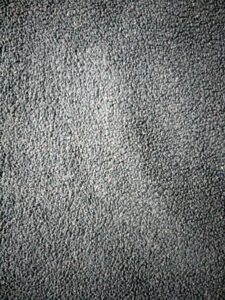
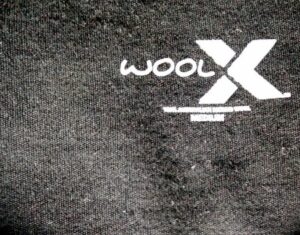
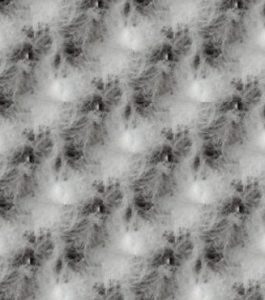
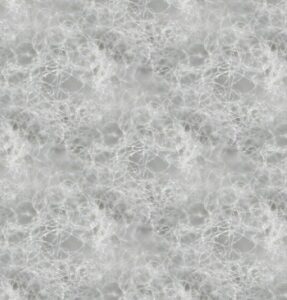
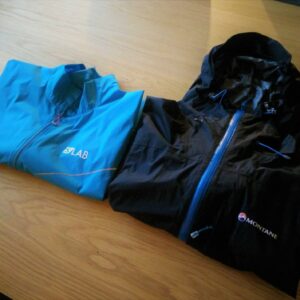
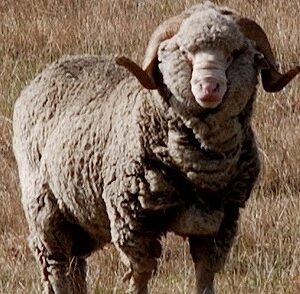
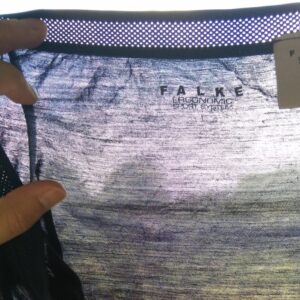
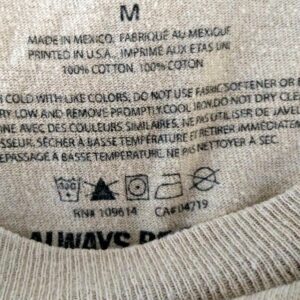
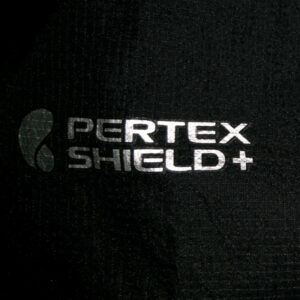
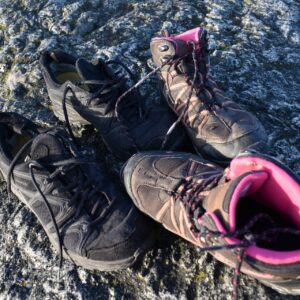
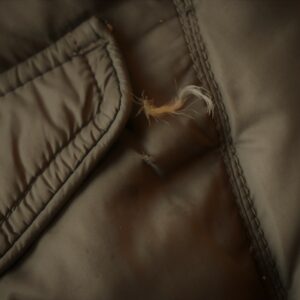

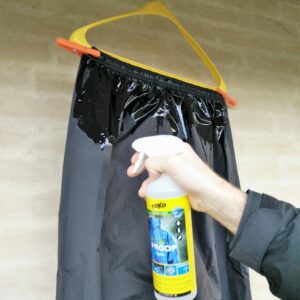












Very very good and precise information with enough amount of technical descriptive information and good balanced for the avarage reader. Well balanced! Keep going.
Cheers.
Thanks Christian!
Great post. I’ve been trying to figure this out for a while, and you laid it out there very well.
I’m planning a trip to the Scottish HIghlands in early March, and I’m going back and forth on what to use as a midlayer over a Merino base. Down is warm, but Scotland is well-known to be very wet. Fleece is good in moisture-laden environments, but is it warm enough? I can’t afford 4 layers from scratch. Maybe synthetic is the best compromise.
Hi John,
I would definitely go for a jacket with synthetic insulation for such conditions. In comparison to fleece it also provides protection against the wind and some basic rain resistance.
I wish you a great hike in the Scottish Highlands.
Blaz
Thank you for your work. It’s great!
Hello Blaz,
“The main advantage of synthetic insulation is that it retains warmth even when exposed to moisture” – I disagree. Even PET can get soaking wet and terribly cold – nothing special here.
In real practical tests PET can take up much more than 0.4% extra weight moisture claimed – easily over 100-200%. For wool it is over 300%, and for cotton over 500% (not 25x or 2500%, as claimed everywhere).
Wool – you miss out an important part: it has a very unique thermo-regulation, and a “radiating” warm feeling in colder temp., which is superior to synthetics, no contest. The single only downside it is a tad heavier, true, but in all other domains it is better than any synthetic material (acrylic, PA, PET etc.) – wool mix is meant here (50-90% wool content, rest typically PA).
Summary: both PET and wool can get soaking wet and feel cold – with wool this comes much later beyond appr. 30% of weight sweat is absorbed. The key is NOT to wear closely fitting base-layer in cold, as this dramatically increases conductive heat loss, and has zero value in ANY weather condition, anyway (blocking air-flow, convection, inducing sweating much earlier etc.) – in this domain PET is the worst material I can recommend anyone, as it traps heat and makes you sweat more, but keeps you cold if wet in colder temp.
Hi Józsa,
I agree, also synthetic fabrics can get soaking wet and terribly cold. Nevertheless, in general (high-quality) synthetic fabrics absorb very little moisture. I have an old fleece jacket that utilizes Polartec fabric and it comes almost dry out of the washing machine. As for the Merino wool, in my experience it’s not a tad heavier than synthetics but a lot heavier 🙂 That’s why I’m not a big fan of Merino wool when it comes to mid layers, but I love it for base layers. It’s just too heavy for insulation layers, especially when it starts absorbing the sweat.
You say: “The key is NOT to wear closely fitting base-layer in cold, as this dramatically increases conductive heat loss”. Do you have any resources to confirm this? In my experience closely fitting base layers provide better insulation since they let less warm air out. They also dry faster during pauses because there is less fabric and body heat speeds up the drying.
Best regards,
Blaz